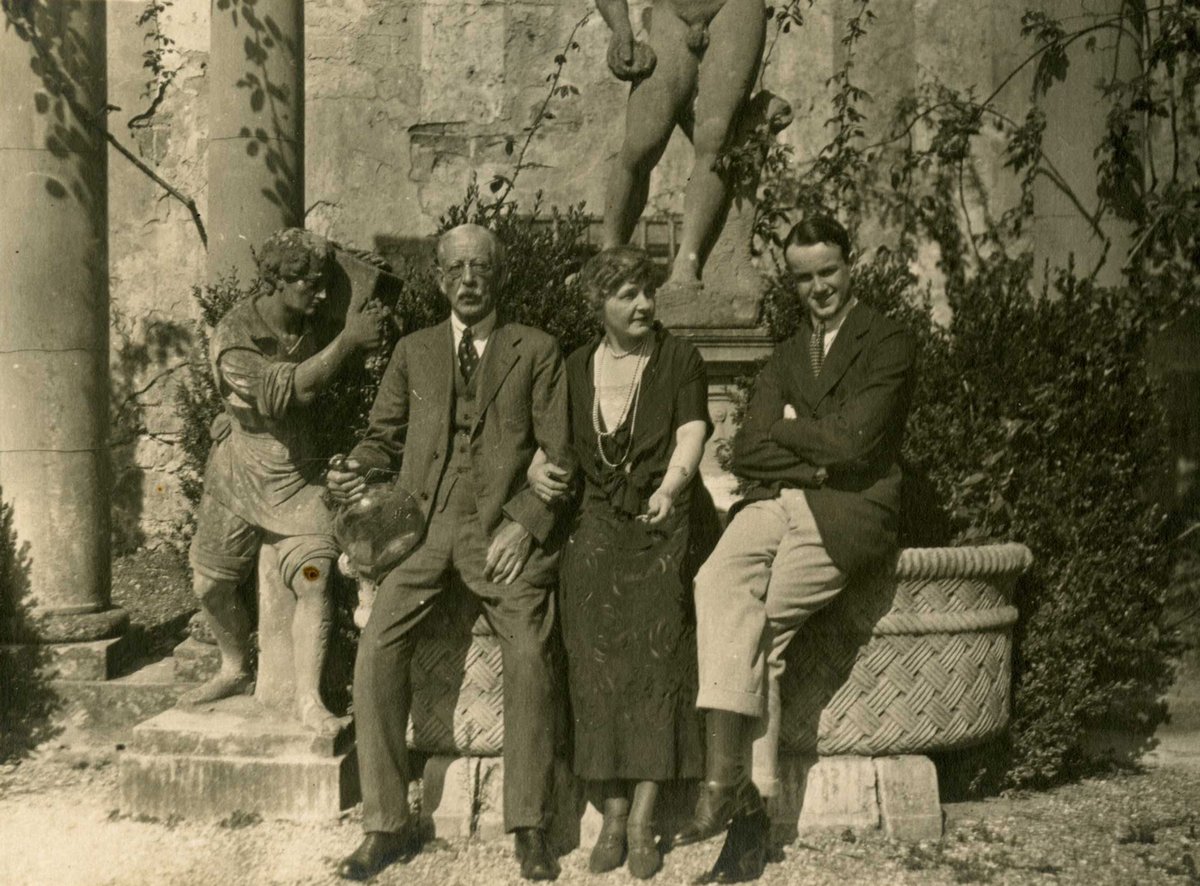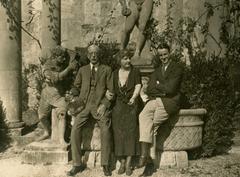
Villa La Pietra Florence: Visiting Hours, Tickets, and Historical Sites Guide
Date: 14/06/2025
Introduction
Perched gracefully on the northern hills overlooking Florence, Villa La Pietra is a captivating blend of Renaissance heritage, Anglo-American influence, and modern academic life. Managed by New York University (NYU) since 1994 after being bequeathed by Sir Harold Acton, the estate is both a cultural institution and an educational hub. With its roots tracing back to the 14th century and a layered history of noble families, Villa La Pietra enchants visitors through its art-filled interiors, stunning Renaissance Revival gardens, and ongoing cultural programming.
This comprehensive guide details Villa La Pietra’s visiting hours, ticketing procedures, accessibility, and tips for making the most of your visit—all essential for planning an enriching experience. For the latest updates, consult the NYU Florence website, Traveling in Tuscany, and The Florentine.
Contents
- Introduction
- Origins and Historical Transformations
- The Acton Family and 20th-Century Revival
- NYU Stewardship and Academic Role
- Artistic and Architectural Highlights
- Gardens and Landscape Design
- Visitor Information: Hours, Tickets, and Tours
- Travel Tips and Nearby Attractions
- Frequently Asked Questions (FAQ)
- Conclusion and Final Tips
- References
Origins and Historical Transformations
Medieval and Renaissance Beginnings
Villa La Pietra’s history begins in the 14th century, originally under the Macinghi and then the Sassetti family—prominent Florentine bankers and Medici affiliates (visiteguidateafirenze.it). The villa’s name, “La Pietra,” refers to the stone outcrop it occupies, offering panoramic views over Florence and the Arno Valley. In the 15th century, Francesco Sassetti initiated the transformation from a medieval structure to a Renaissance residence, with symmetrical forms, frescoes, and classic motifs (wikipedia; travelingintuscany.com).
Baroque Enhancements
In the 17th century, Cardinal Luigi Capponi expanded the villa, introducing Baroque elements such as grand staircases and elaborate stucco while preserving the Renaissance spirit (wikipedia).
The Acton Family and 20th-Century Revival
In the early 20th century, British art dealer Arthur Acton and his American wife, Hortense Mitchell, acquired Villa La Pietra. They meticulously restored its Renaissance features, blending Italian tradition with Anglo-American taste. Their extensive collection of paintings, tapestries, sculptures, and rare books created a living museum within the villa (travelingintuscany.com).
During WWII, the villa was requisitioned by German and then Allied forces but remained largely intact, thanks to the Acton family’s stewardship. Sir Harold Acton, their son, preserved its legacy, hosting artists and intellectuals and ensuring its survival into the modern era.
NYU Stewardship and Academic Role
Following Sir Harold Acton’s bequest in 1994, Villa La Pietra became the heart of NYU Florence’s academic and cultural programs. The estate encompasses the main villa, five additional villas, formal gardens, olive groves, and woodlands, covering 57 acres. NYU’s restoration efforts have preserved the estate’s historical character while adapting it for research, education, and public engagement (travelingintuscany.com).
Today, Villa La Pietra hosts courses in art history, literature, and international relations, as well as public events, conferences, and the acclaimed “Season” program of performances and exhibitions (theflorentine.net).
Artistic and Architectural Highlights
The Villa
The main villa harmoniously combines Renaissance and Baroque architecture, with a symmetrical façade, arched loggias, frescoed ceilings, and ornate stonework. The interiors display over 6,000 art objects, including Renaissance and Baroque masterpieces, period furniture, and rare textiles (visiteguidateafirenze.it).
The Acton Collection
Noteworthy pieces include paintings attributed to Giambologna and Federico Bonazza, alongside an extensive library of roughly 10,000 volumes and valuable archives documenting Anglo-American culture in Florence (travelingintuscany.com).
Gardens and Landscape Design
The villa’s gardens are among Tuscany’s finest examples of Anglo-Italian design, restored to their early 20th-century grandeur (NYU Florence - Gardens). Key features include:
- Terraced parterres with over 180 statues
- Cypress-lined avenues
- Ornamental fountains and a traditional limonaia
- Pine allée and sea shell grotto
- Baroque-style outdoor theater
The gardens’ design echoes the 16th-century Tuscan tradition, reinterpreted by the Actons with the guidance of architects like Stanford White and Henri Duchêne (withinflorence.com).
Visitor Information: Hours, Tickets, and Tours
Access and Reservations
Villa La Pietra is not open for daily public visits. Access is via guided tours by advance reservation, primarily during spring and autumn (Pith & Vigor). Walk-ins are not permitted.
- Visiting Hours: Tours are typically offered on select days from April through October, usually between 10:00 AM and 5:00 PM. Confirm the latest schedule on the NYU Florence website.
- Tickets: Admission is via pre-booked guided tours; prices generally range from €15–€25. Some events may be free or discounted for students and seniors.
- Booking: Reserve online or contact NYU Florence directly. Early booking is recommended, especially during high season (European Traveler).
- Tour Duration: Most tours last about two hours and include the villa’s main floor and principal garden areas (Triphobo).
Accessibility and Guidelines
- Mobility: The historic layout means uneven surfaces and steps; contact NYU for specific accessibility accommodations.
- Children: Recommended for ages 10 and above; families with younger children may prefer garden tours.
- Photography: Permitted in the gardens, but restricted inside the villa to protect artwork.
- Facilities: No cafés or restrooms inside; a deli with snacks and Wi-Fi is nearby (Pith & Vigor).
Travel Tips and Nearby Attractions
Getting There
- Public Transport: Bus from Florence’s city center takes less than 15 minutes, with a stop near the villa’s gate.
- By Car: Limited parking; public transport is generally easier due to local traffic restrictions (Triphobo).
Nearby Florence Historical Sites
Combine your visit with:
- Villa Medici at Castello: Noted for its gardens.
- Rose Garden: Offers beautiful panoramic views.
- Florence Cathedral (Duomo), Uffizi Gallery, and Ponte Vecchio: Located in the city center.
Frequently Asked Questions (FAQ)
Q: Can I visit Villa La Pietra without a guided tour?
A: No, all visits require an advance reservation for a guided tour.
Q: How do I book tickets?
A: Visit NYU Florence’s website or contact them directly for schedules and booking.
Q: Are there discounts available?
A: Discounts are often available for students and groups.
Q: Is Villa La Pietra accessible for visitors with disabilities?
A: Accessibility is limited; inquire in advance for possible accommodations.
Q: Can I take photos?
A: Photography is allowed in the gardens, but restricted inside.
Q: What is the best time to visit?
A: Spring and early autumn offer pleasant weather and full garden blooms.
Conclusion and Final Tips
Villa La Pietra stands as one of Florence’s most remarkable historical estates, uniquely blending Renaissance artistry, Anglo-American heritage, and vibrant academic life. Today, as NYU Florence’s main campus, it balances cultural preservation and educational innovation, welcoming visitors through exclusive guided tours and public cultural events, especially during the spring and summer “Season.”
To maximize your visit:
- Book tickets early.
- Confirm hours before arrival.
- Pair your visit with other Florence attractions.
- Explore virtual resources and audio guides for a richer experience.
For the latest updates, consult the NYU Florence website and authoritative sources such as Traveling in Tuscany, The Florentine, and Pith & Vigor.
Whether you are an art lover, history enthusiast, or curious traveler, Villa La Pietra promises an unforgettable journey into the soul of Renaissance Florence.







































































